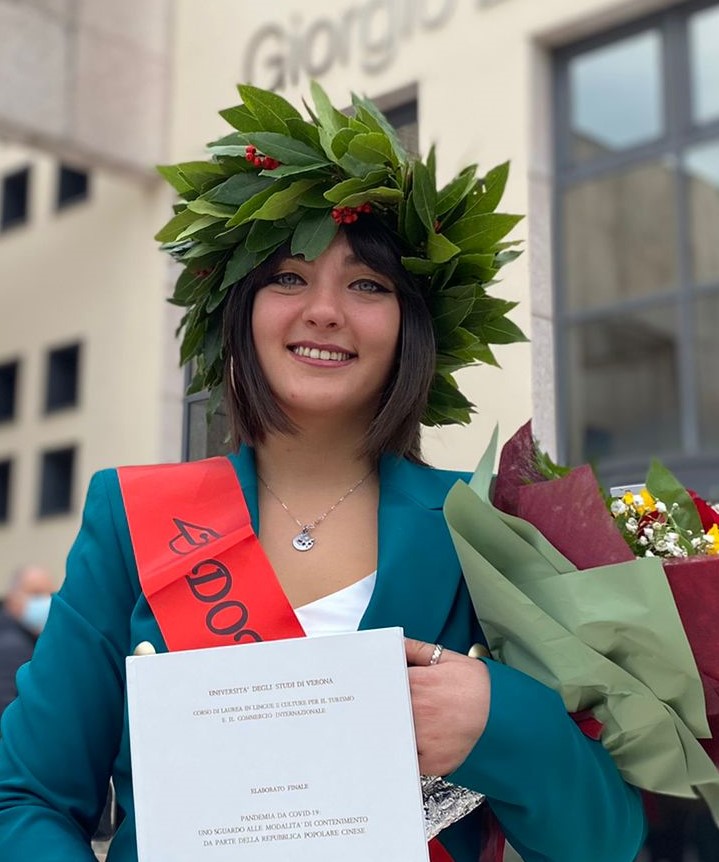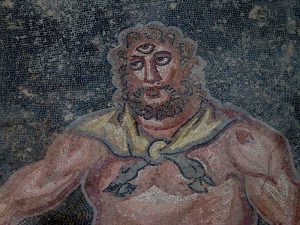THE WINE, FRUIT OF THE HISTORY AND OF SCIENCE.
8 min read
Pouring a glass of red wine
Red, white or rose. Sweet or dry and why not, even sparkling. It accompanies the dinner, relaxes if drunk while listening to good music. It is companion of nights and comforter in defeats. We are talking about wine. What makes it so irresistible?
A LITTLE OF HISTORY.
The origin of the term wine still today represents, for linguists and historians, a mystery to sort out.
For some of them, the term comes from “vena”, the Sanskrit word which means “to love” and from which should come the Greek word “Venus”, the goddess of Love. Others think that the word comes from the ancient Hebrew word “iin”, which came into the Greek “oinos”. Others, instead, believe that it could come from the Sanskrit root “vi”, which means to twist, a work that evoke the imagine of the vine, climbing plant that which prerogative is that of twisting. The age-old question about the authorship of the word “wine” had already been analysed at the time of Cicero, who attributed to the word a Latin root, deriving “vinum” from vir (man) and vis (strength). This theory, however, has lost its power nowadays, since we are incline to think that “vinum” finds its origins in the Greek “Οίνός”, Attic-Ionian lemma from “no” derives, root used correctly to indicate only those activities linked to wine: eno-logy, eno-gastronomy.
On the place of origin of the wine, instead, there are no doubts: motherland seems to be a Caucasus region, the Iberia, corresponding to the actual Georgia, that proclaims itself proudly as “the cuddle of wine”. Famous for the kwevri, underground clay pots where wine was fermented, is also known for a winery of 8.000 years, considered the most ancient in the world.
The Georgian term for wine is “gwino”, which seems to have the same etymon of the Hittite word “wiyan(a)”, of the proto-Semitic “wyn” and the Arabic “wayan”. Whatever the origin of the term, its diffusion is certainly global, in fact, “wine” is one of those words that linguists define “travelling”, that is able to move in space, reaching remote places and different peoples, persisting for many ages, creating horizontal links, bridges between different cultures.
Dating back to the birth of the wine, let’s stop for a moment in the ancient Rome too, where Bacchus, the god of thrills, of extasy and noise, also known as Dionysus by the Greek people, is famous for the excess and recklessness. In the art he is often represented as a young man adorned with grapes and always accompanied by an inevitable glass of wine. Within myths, that tells the birth and diffusion of wine, it is Bacchus to create it by squeezing the grapes by his hands, where flows the precious drink that leads to the excesses of which he is the god.
FROM THE BEANS TO THE JUICE… OF THE QUESTION.
We wouldn’t mind if it was so easy to have a glass of wine! Luckily or unfortunately, the process the transforms grapes into wine is far more complex and interesting, and it is divided into various steps:
- The pressing is the first step, and it depends on weather to produce red or white wine, although in both cases black grapes are used. For producing white wine, grape’s skin is immediately separated from the pulp; for red wine, instead, it is necessary to use pomace, that is what remains from grapes together with fermented must or partially fermented must, so skins are preserved, so that they can give their typical aromas and colours within the process of fermentation.
- The vinification, that is the fermentation of the must, as well as being the second step to reach the nectar of the gods; it is among the most ancient forms of biotechnologies ever documented. The protagonists of this step are the yeasts, specifically the Saccharomyces, micro-organisms naturally living on the fruit’s skin. These micro-organisms transform grapes’ sugar into ethyl alcohol and carbon dioxide (waste products), thanks to the glycolysis and alcoholic fermentation. This process is necessary to obtain energy and to free from catabolic products and is usually implemented by yeasts whenever sugar is available. The duration of vinification can take from 24 hours to 7 days giving, of course, taste, fragrance and aroma depending on the time of fermentation and the quality of vine used. It is in this step that the fate of our wine is decided: if we want it sweater, fermentation must be stopped early and all the yeasts must be eliminated through centrifuging and filtration; if, instead, we want it dry, fermentation will have longer times. The process will bring to almost completely run out with available sugars, and this will provoke other reactions, superior fermentations, thanks to the amino acids, giving new aromatic molecules.
- The racking, only necessary if pomace is present, is that step that will allow the separation of the must, through the pumping from vats to barrels. Although they gave colour and aroma to the must, they haven’t exhausted their potential: they can be used to produce vinegar or grappa or being used as feed. In barrels, the wine slowly finishes fermentation processes, that are notably slower as the substrate for reaction are less available.
- Eventually, they proceed with several decanting and steps of filtration, to eliminate as much as possible yeasts and other suspended particles in wine, to proceed, finally, to the bottling.

THE CHEMISTRY OF WINE, FRUIT OF THE TIME.
Grape has been transformed into wine and closed in a beautiful bottle ready to be opened.
Saccharomyces has transformed glucose and fructose in other things, making this juice unique. But, exactly, besides ethylic alcohol and carbon dioxide, what other components characterize wine?
Water.
Certainly, one of these is water, that represents indeed the principal component of the drink and comes from the flesh of the berries. Its presence goes between the 80% and the 90% of the volume and has the task of link all the other components among them.
Ethanol and glycerol.
The second component for quantity is the ethylic alcohol, the ethanol, created by the alcoholic fermentation, is responsible for the thrill given by wine. Its quantity is measured as percentage of the volume and is called alcoholic strength, generally varying between 9% and 16% of the volume of the drink. A second product of the fermentation is glycerol, that helps ethanol to create the body of the wine, giving it a “soft” character.
Sugars.
Don’t forget the contribute of sugars: glucose, fructose, xylose, arabinose and sucrose, without which magic wouldn’t happen; they are contained in the grape pulp and they are totally used within the chemical reactions happening during vinification.
Acids.
From alcoholic fermentation, particularly from the oxidation of acetaldehyde, derives the acetic acid. Its concentration must be kept within certain limits since it can negatively influence the wine fragrance. Its effects are generally contrasted by adding sulphur dioxide, already there after fermentation, able to smooth deleting its effects.
In addition to contrasting the effects of the acetic acid, the sulphur dioxide can preserve wine, avoiding alterations du to the time. Anyway, is better to keep acetic acid below the threshold of 0,5 g/l, avoiding adding excessive sulphur dioxide because it is a toxic molecule to our organism.
Tartaric acid, malic acid and succinic acid, naturally present in grapes, are the principal responsible for the characteristic acidity of wine.
Polyphenols.
As well as the taste, we can’t forget that wines are distinguished for the colour and the aroma. Wine colour is influenced by the presence of molecules known as polyphenols: for red wine they are anthocyanins and tannins; for white wine flavones, catenins, leuco-anthocyanins and chlorophyll. Some of these, such tannins, catenins and leuco-anthocyanins, help building the taste of wine, giving the sense of astringency that characterizes it.
Aromatic molecules.
In wine are also present other aromatic molecules, that give smell and taste to the drink and can be divided into three categories:
- Primary aromatic substances, present in grapes.
- Secondary aromatic substances, produced during fermentation.
- Tertiary aromatic substances, produced during the wine maturation.
The greater the time between the pressing phase and the bottling, the more aromas, colours and fragrances will enrich the final product.
Organic and inorganic salts.
In grapes are also present salts coming from organic acids, such as tartrates, citrates and inorganic salts such as chlorides, sulphates and phosphates contributing to the body and sapidity of wine.
Carbon dioxide.
Finally, we talk about bubbles, or better, carbon dioxide: among waste products of yeasts reactions, it is essential. Generally, it defines the final taste of wine, enlivening the colour and contrasting, with a hard note, the roundness and the softness.
READING THE GLASS THANKS TO THE MARANGONI-GIBBS EFFECT.
We learned how the wine is produced, we know now what are those components that make it the “nectar of gods”, now we have to learn the basis to drink it consciously.
Swirling the wine in the glass, for instance, not only gives us an air of a real sommelier, but also has a specific scope: it is about helping the oxygenation of its components. The more a wine is aged, the more this step, in jargon the decantation, is important and should be occur as much as possible, so that all the aromatic notes, both to the taste and to the sense of smell, emerge while drinking.
At the same time, it allows to “read” the alcoholic gradation of what we are about to drink; indeed, as the wine slips along the walls of the glass, draws some “little arches”, thanks to the combination of the phenomenon of capillarity with that of superficial tension, for which liquids tends to reduce to the minimum their exposed area.
Let’s imagine rotating a glass of wine, along its walls a single thin film of liquid will form, creating a ring or meniscus. In this thin film, ethanol evaporates much more rapidly than water, creating a different concentration of ethanol within meniscus and in the rest of the glass, which induces a reduction of the superficial tension of meniscus that tends, for capillarity, to go upwards along the walls.
After this, for the effect of the force of gravity drops will begin to fall, called “tears”, that will form the little arches, helping us to estimate the alcoholic gradation of wine.

This described phenomenon is known as the “Marangoni-Gibbs Effect”, named after the Italian physicist who first applied to wine the theories of the physicist James Thompson about the superficial tension and mass gradient for fluids, and one of the fathers of thermodynamics who was interested to the same issue.
From the quantity of little arches formed, it will be easy to estimate if we are going to drink a low-alcoholic wine, that will form few and large little arches, or a wine with an alcoholic gradation superior of the 13% that can draw a lot of little and thin arches. All of this just with a simple gesture.
It is not sufficient, of course, to define oneself a wine connoisseur; the knowledge of this drink asks for further insights and a lot of other words would need to give it the due credit. If we stop and think, wine won the succeeding of the eras, the changing of tastes, managed to overcome time never going out of fashion, being an appreciated gift, becoming an excuse to meet up friends, and is still able to make people talk about it.
A bottle of good wine ages well, the concept of wine, instead, seems to never become old.

Dottoressa triennale in Lingue per il Commercio. Ciò che più mi appassiona è lo studio di culture diverse dalla mia, nella consapevolezza che ciò possa portare ad una crescita personale. Sono convinta che tutte le arti e le singole culture debbano essere esaltate e valorizzate nella giusta misura







